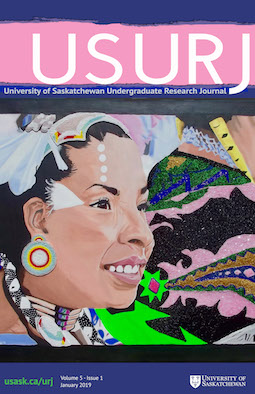The Dire Consequences of Specializing on Large Herbivores
A Comparison of Extinct Canis dirus and Extant Canis lupus
DOI:
https://doi.org/10.32396/usurj.v5i1.347Abstract
Niche differentiation is a way in which similar species avoid competition. Some species do this by specializing in certain prey items. This review aims to determine why the dire wolf (Canis dirus) went extinct while its similar and less abundant relative, the grey wolf (Canis lupus) did not. Both species were present in North America during the Pleistocene, though only one went extinct during the Quaternary extinction event. Physiological differences existed between the two species, mostly due to a greater focus in hypercarnivory for dire wolves. Dire wolves had more robust frame and skull, greater bite strength, and larger carnasials and canines. These differences in dire wolf morphology all help it to handle and kill larger prey species, while the more lithe grey wolf is better adapted to switching to smaller alternative prey. Dire wolves at have been shown to consume mostly large herbivores while grey wolves can survive with lagomorphs as a primary food source. Larger carnivore body size means reduction in locomotor performance, which means that when many mega-herbivores went extinct at the end of the Pleistocene, dire wolves were not as well adapted to switch to smaller prey as grey wolves are. Their naturally larger body mass also means that they needed higher caloric input to maintain their body condition and fecundity. Overall, Canis dirus specialized in larger prey than Canis lupus, so when this prey became extinct, the dire wolf went extinct along with other hypercarnivores such as the North American lion, Smilodon, and short-faced bear.
Downloads
Published
Issue
Section
License
Articles: USURJ’s current Publication Agreements apply a Creative Commons Attribution-NonCommercial License (CC-BY-NC) by default. The CC BY-NC license lets others remix, tweak, and build upon work non-commercially. The author(s) can choose a different CC license, as outlined in https://creativecommons.org/about/cclicenses/. Please see the PDF for each article to determine what license is applied to that article. Author(s) can also request to reserve all copyright (All Rights Reserved). If there is no indication for articles published before September 2020, assume the author retains all rights beyond those necessary for publication by USURJ. All articles published after September 2020 will apply one of the aforementioned CC licenses. See the Publication Agreement under the Submission Preparation Checklist or Author Guidelines for more information. Artwork: All copyright for the original artwork remains with the artist unless they wish to apply a Creative Commons (CC) license to the artwork. Please see the PDF for each artwork to determine what license is applied to that artwork.







